The Synclavier Sound
with playable examples
As Cameron Warner Jones put it in a recent podcast, every instrument has a personality. Ask five top actors to read a scene, and they’re all going to do it slightly differently, imbuing it with their own personality. And so it is with synthesizers and…erm…sawtooths.
So here’s an inexhaustive list of sonic attributes of the classic vintage Synclavier that – when added together – make that recognizable Synclavier Sound. With some shameful marketing, we also highlight which attributes are inherited or recreated for Regen. And at the end of the article, just for fun, we have some A&B examples of a vintage Synclavier system and Synclavier Regen producing the same passage of music.

Combination of Additive and FM techniques
The primary tools to create waveforms on the Synclavier II are additive and FM. True when it was first released, and these are still the primary tools implemented in the same way on Synclavier Regen.
Other digital synthesizers of the era (and many afterwards) would use FM, but the operators were limited to sine waves. Synclavier II’s carrier wave has always been built from (up to) 24 harmonics summed. You can create very complex waves by adding sine waves of varying coefficients and phases together (in fact, Fourier theory suggests you can create any waveform). Adding FM then adds more complexity, with harmonic and inharmonic overtones dependent on the FM Ratio.
So, for example, on a DX7, you might create a tone by frequency modulating one sine wave with another sine wave at a different frequency multiple. For more complexity, you may then use another “operator” sine wave to add more FM or use some feedback.
Whereas with Synclavier II, you would curate your carrier by building the additive waveform first, and then apply FM judiciously to that at a chosen ratio and amount. For more complexity, you use a complex carrier.
The two approaches to FM, while having a large crossover on results, naturally flow to different corners of the sonic spectrum, providing a somewhat recognizable flavour of sound.
Mathematically, there’s a few different ways to frequency modulate a carrier. To save computation cycles, the Synclavier II used an unsigned algorithm, and that exact formula was retained in Regen.
FM synthesis is now a well-trodden path to create many types of sounds, including bells, digital grunge, metallic leads, pads, and so on. But additive synthesis has been relatively under-utilized in the hardware world. And the synths that did offer additive, such as the Synergy, Seiko DS-250, Casio FZ-1, Kawai K5000, didn’t combine it with FM (the latter providing effects such as flangers and phasers to achieve those kinds of FM sounds).
So the Synclavier sound is somewhat unique in being deeply routed in the techniques of additive and FM combined.
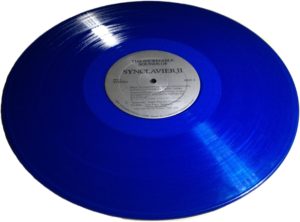
The Partial Timbre Method
NED had a patent [https://patents.google.com/patent/US4554855A/en] on Partial Timbre Sound Synthesis, and although nowadays many synths blend multiple layers to create a sound, it’s always been a key foundation in Synclavier sound design that multiple layers or partials could be mixed together, each with a different additive waveform and different FM operation. The patent describes how selecting different parameters on several partials can create more authentic or simply different sounds, not previously capable, and it’s true that this partial method is palpable throughout the canon of classic Synclavier presets.
An obvious example of disparate partials mixing well together is Galactic Cymbal (or the Beat it Gong) and its four parts (partials), but there are countless examples of successful blending of multiple partials to create an interesting sound.
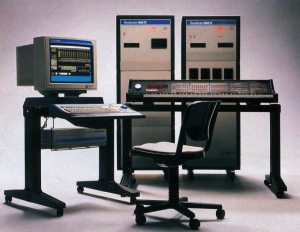
Hardware Architecture
Synclavier is known for many things, but much has been made of the character and fidelity of the sound they produce. The fidelity is largely down to the ingenious hardware design by Sydney Alonso, focussed on low noise floor and high dynamic range. The Regen circuitry, designed by Craig Phillips, has followed this pursuit religiously. The character of the sound is, in part, down to accidents; or, with hindsight, serendipity.
Serendipity, such as the computational restraints of computers of the time. Analog synths of the era used RC circuits for their volume envelopes, which provide an exponential decay curve. Software synths nowadays use lookup tables to get exponential curves. Synclavier II saved computation cycles by having a segmented linear decay. For decay periods longer than 50ms, an adjustment factor was subtracted from these segments as time progressed. The idea was to approximate an exponential decay, but it turned out more parabolic in nature. This had a direct effect on the characteristic sounds of things that ring out (vibes, marimbas, chimes, bells). This decay shape is the default on Regen, but with Regen, you can also select linear or proper exponential decay curves.
Accidents, such as the availability of components at the time, including the 8-bit R2R sample-and-hold DACs. To squeeze more resolution, each voice card used one 8-bit DAC for the FM Additive voice generation that was multiplied with 2 other 8-bit DACs (one for volume and one for volume envelope) the result of which was fed to the outputs directly: against current customs, no reconstruction filters were added; therefore many harmonic artifacts from sounds bloomed spectrally (as can be heard in some of the A&B examples below).
NB: On Regen, if you reduce the bit-depth of an additive partial to under 12-bit, you add a quantization error, or to put another way, force some steppiness into the DAC output. Owners of both systems have reported that dropping down the Regen Additive waveforms to around 7-bit can best matches the Synclavier II sound.
Every output from Regen (balanced, unbalanced, and headphone) is DC-coupled to get the full range of frequency out. To that point, in Regen’s circuit, the “brick wall” filters after the DAC have their cut-offs pushed way up into inaudible high frequency, so they don’t mess with the intended audio from the DAC and only nullify unwanted frequencies that may be present, such as CPU clock noise. The so-called bloom of the original Additive FM voices can shine through.
Further, the reproduction circuitry in these early voice cards, while ingenious for the time, had many limitations. They were only capable of certain base frequency multiples, so for each of the twelve notes, a nearby frequency was selected that created a compromise between the equal temperament scale and what the Synclavier hardware was capable of, slightly different for each octave. This was selected after much auditioning, to be pleasant sounding for triads and fifths, without sounding bad for other intervals.

Sampling
The 50Khz sample rate of the DACs was not by accident. For the sampling feature, NED waited for the technology to arrive that could support 50Khz, then built the mono sampling product around it. Synclavier Regen’s DACs run at the now non-conventional 50KHz rate, providing the same calibre of sample output as the first Synclavier II sampling systems.
The PSMT (polyphonic sampling) models, that shortly followed, had superior technology all-round. They supported sample-to-memory with rates up to 100Khz and had 16-bit DACs and didn’t suffer from a limited amount of possible base frequencies. Despite this, it was agreed within NED to preserve the intonation error from the original, because it “sounded more musical.” The Synclavier is arguably better known as a sampler than a synthesizer, and it’s worth noting that if it hadn’t started off in life as a synthesizer, the design approach would’ve been different and these happy accidents would never have been included.
Early samplers could transpose samples up and down the keyboard by changing the rate they played them. Playing a note in a higher pitch than that of the sample would cause a sample to be played faster, some of the samples being skipped. Unless the increased rate is an exact multiple of the original sample rate, some interpolation is required to figure out the waveform value between samples.
Some really crude samplers skipped this step, just outputting the nearest sample. This introduces a decimation error. Similarly, interpolation is required when the sample is slowed down, because then you’re feeding one or more values to the output that have to be reconstructed between samples in the file: you can really hear the error when interpolation is skipped for pitched down samples.
In fact, that decimation grunge, associated with vintage samplers, is often desirable nowadays. On Synclavier Regen, you can turn Off the sample Aliasing Filter that performs the interpolation, per partial, to create that grunge effect.
The Synclavier PSMT systems were a bit more advanced for the time; they didn’t skip interpolation, but didn’t perform full interpolation either; if a sample didn’t land on the clock exactly, it would be nudged to the right proportionally to its proper place; so the DAC rate wouldn’t be altered, but the sample would be supplied in a later “time slot.” Since there was a discrete amount of time slots available, there was still an error, but not as crude. It’s difficult to mathematical express the effect of this type of jitter error in frequency spectra, as it’s non-linear with respect to frequency. It’s also intensified when there are multiple voices, each calculating their own time-slots independently from each other and then being summed.
With the sample Alias Filter On, Regen uses a time-domain dithering algorithm for sample playback that mimics the approach of the original.
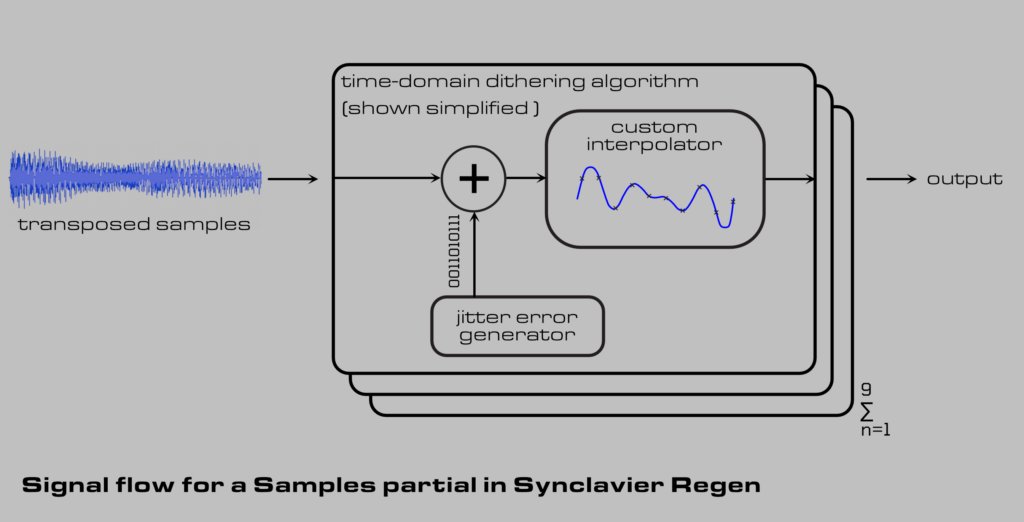
Developed by Cameron for Synclavier V and enhanced for Regen, this custom algorithm mimics the error of the DAC circuits particular to the PSMT voice cards. This was developed to be faithful to the original as well as being musical in its own right. Key to this endeavour was the A&B testing (see section below). For this to have maximum impact, the DAC circuitry in Regen – based on a different architecture (sigma delta) – had to be designed to be as transparent as possible with near-zero jitter error. This was achieved by careful schematic design and selecting the highest quality components available.
So, all these limitations / accidents / errors (pick your term) in the hardware voice cards have been modelled in Synclavier Regen’s software, and since most of this phenomena occurs in the digital domain, it’s an exact reproduction in Regen. Many lifelong Synclavier II owners have reported that the trademark Synclavier punch and wide-open top end is demonstrably present in Regen.
As Cameron puts it, “these errors aren’t something that you can necessarily measure in the audio, and aren’t something that you can hear if you just listen to one solitary timbre producing one note, but play a chord and…magic!”
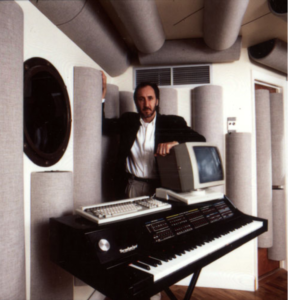
User-Interface
So, by now you may be thinking, “Synclavier Digital must be crazy, giving all their secrets away, now anyone can make a great sounding synth and steal their market.” Well, having the idea is one thing, but behind the implementation is years of tireless work. And that’s before you create the user interface.
Many of the synths that have come and gone, with complex sound engines incorporating features such as additive and FM, are notoriously fiddly to operate, beloved only by those that have devoted their careers to sound design and synth programming.
The user-interface of the Synclavier was never an afterthought. Synclavier was an instrument designed for musicians. Cameron developed the interface to connect with the creative right-side brain as well as the logical left. While admittedly requiring time to master, with all the complexity of the Synclavier, it’s remarkably successful at speaking to musicians. Check these quotes:
“I’m very grateful to the inventors of the Synclavier, for making me a whole person, not just a mind.”
– Sting
“The Synclavier is a right hand brain machine, it is part of the creative process. A computer is a left hand brain machine. When I am composing I want to stay in the right hand brain side, when I use a computer I have to keep switching between the two sides.”
– Pete Townsend
“I don’t think when I use it. With any instrument – violin, guitar, piano etc. – if you have to think how to use it, it loses its point, because you are not thinking about the music. It becomes a machine rather than a musical instrument.”
– Simon Franglen
With a powerful enough digital synthesizer, any sound you care to dream up, can be programmed, the question is how? The philosophy and layout of the user-interface will naturally steer sound design in certain fertile directions. The cache of classic Synclavier sounds certainly owes a debt to its user interface. Regen has a different layout, by virtue of being a smaller desktop machine, but shares much of the philosophy of its predecessor, and initial feedback from customers suggests it speaks to musicians in a similarly successful way.

Other honourable mentions
There’s a high probability that some facet of the original is missing from this article, but here’s some honourable mentions.
The particular resynthesis algorithm that was developed for Synclavier II, just prior to sampling becoming a thing, was preserved as-is for Regen, with all its limitations and nuances.
The New England Digital “Able” computer that calculated the wavetables used fixed-point arithmetic, which means there are rounding errors on every calculation. Most were insignificant in regards to audio, but some – especially concerning the FM – had an effect. Regen’s processing is natively 64-bit floating point; its arithmetic not prone to rounding errors (the limitations of floating point representation is best kept for another blog post); so rounding errors were introduced to a few key calculations on purpose to preserve the texture of the original sound.
The sheer complexity of the DSP engine, both in sound design – having fine control over a gamut of parameters, such as tremolo phase – and performance – features such as introducing tiny detune amounts into each note played to add subtle variety – and many other qualities, must each permeate into the whole Synclavier Sound.
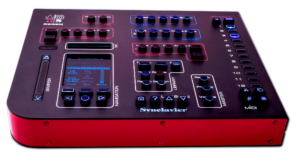
A & B Testing
During the development of Synclavier V, Synclavier Go!, and Synclavier Regen, substantial A&B testing was performed against a complete vintage Synclavier system with polyphonic sampling. This was useful to check that the development of hardware and software was heading in the right direction.
As you can no doubt tell from the selections below, any differences in end product are slight.
These pairs of recordings were made on the same high-quality converters into Pro Tools (at 24-bit 44.1KHz) after volume matching. No outboard effects have been added and no information has been lost to file compression.
NB: The FM timbres used in these comparison tests were from the very first Synclavier II system floppy disk. The samples are taken from the original NED sample library. (The preset format is back-compatible, so Regen can load any Synclavier II timbre or PSMT patch.) Sequencing and programming courtesy of Kevin E Maloney.
In each pair (top and bottom), one is Regen and one is a vintage Synclavier, both playing the same MIDI file and producing multi-timbral output. We’ll let you guess which is which in the comments section, and when enough people have cast their votes, we’ll reveal the identities.
It goes without saying that you’ll need to use high-quality reproduction equipment to tell any difference – an iPad speaker isn’t going to cut it.

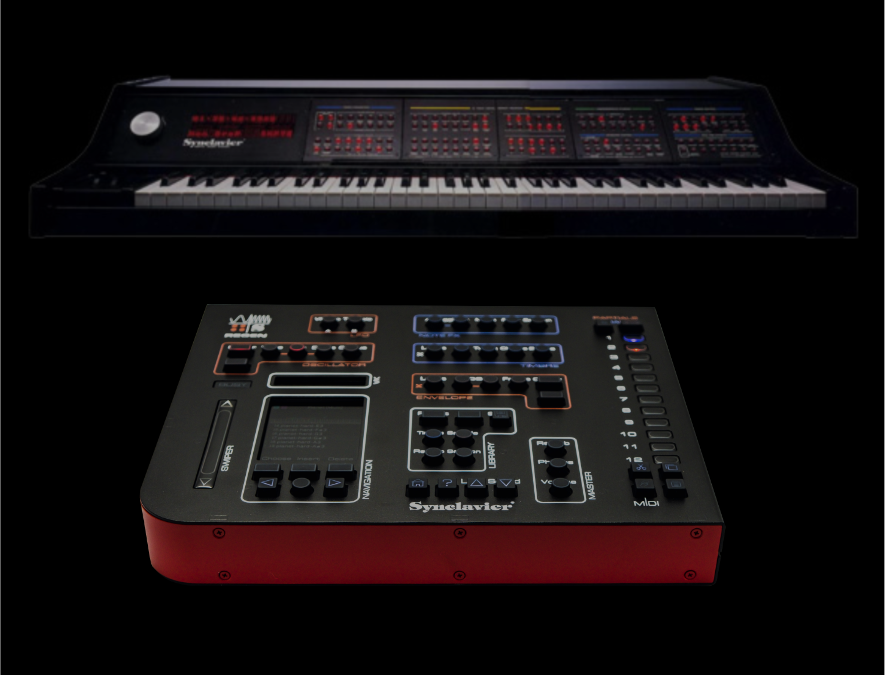
The top row (Additive 9 & 11 and Samples 5 & 7) seem to be from one unit, and the bottom row seems to be from the other. The top samples are just a bit brighter. As for which is which, I have no clue as I haven’t been around a PSMT for far too long. My knee jerk reaction is that the top row is the PSMT, but I have no real basis for that thought.
Thanks for the very interesting article. I had found other writings referring to the 3 DACs used per voice and the interpolation but had never really had a grasp of how it actually worked until now. The interpolation makes sense to me now, and reinforces some concepts I’ve discovered when editing audio in a DAW. It also explains what I’ve heard when toggling the Alias Filter on my Regen. Thanks!
Thank you for doing this, it should settle the onliine debates about it! Regen is an incredible product and I hope it is doing well.
The differences are very very slight, and I’ve never heard a PSMT or Sync II in the flesh, but I like to think I know what modern state of the art DSP such as Regen sounds like!
9= Sync II
10= Regen
11= Sync II
12=Regen
5= Regen
6=Sync II
7= Sync II
8=Regen
I hear clicks on the samples in 7, and they seem to be shorter?
I prefer 10, 12, 5 and 7 and I’m hoping it’s the Regen 😀
To me 9 & 11 had annoying sustain loops and the 6 and 8 samples were more low-fi
10, 12 and 8 sounded slightly fuller and better, maybe because bass frequencies levels are very slightly higher. Not sure between 5 & 6 (maybe because I didn’t like the source material). I have no idea which is which.
So this is what they were made on:
Additive FM #9: Synclavier Regen
Additive FM #10: Synclavier II
Additive FM #11: Synclavier Regen
Additive FM #12: Synclavier II
Samples #5: Synclavier Regen
Samples #6: Synclavier PSMT
Samples #7: Synclavier PSMT
Samples #8 Synclavier Regen